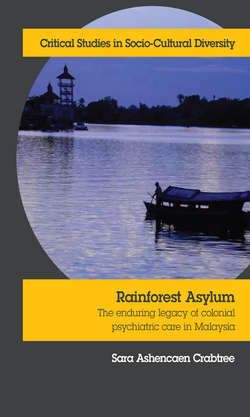Читать книгу Rainforest Asylum - Sara Ashencaen Crabtree - Страница 13
На сайте Литреса книга снята с продажи.
2 Fieldwork and field relationships
ОглавлениеSocial science studies that engage directly with the issue of culture, both as conceptual and overlapping social construction, as well as ‘culture’ enacted as a unfamiliar and factual reality, such as is the case here, have typically been classified as essentially anthropological in essence. Classic anthropological ethnographies have almost invariably taken place in locations far removed from the home environment of the researcher, such as those of Malinowski in New Guinea (1922) or Mead in Samoa (1943). These locations have often been perceived as exotic or in some other sense removed from the familiar. Nancy Scheper-Hughes, for instance, leaves the United States of America and chooses rural Ireland, which appears to represent a sharp contrast to her own cultural background; subsequently writing an account of anomie, social and, arguably, cultural stagnation and mental illness (Scheper-Hughes, 1982). Sue Estroff, by contrast, emphasises that her ethnographic study of mental illness in Wisconsin takes place in her own hometown. Although this was a study from home, she conveys the polarisation between the underground existence of a deeply marginalised group of people and the privileges of the comfortable, conventional living standards that she is familiar with (Estroff, 1985). Scheper-Hughes also offered an account of neonatal mortality in impoverished communities in Brazil. This locates the mature author as a foreigner from the First World, but whose association with the country and rationale for research has been formed through the influences of a period of residence there as a young voluntary worker (Scheper-Hughes, 1992).
My own particular situation approximates in some ways to that of Scheper-Hughes in the latter example, in that Malaysia was my home for some years. This resulted in my ambivalent position of being both familiar with, as well as being a stranger to, the region. My status, however, was that of a non-permanent resident with no citizen rights and subject to the terms of temporary employment. I was therefore only partially assimilated with tenuous ties and commitments, which I was aware would begin to atrophy with my departure. The identification I felt were filtered through the conditions of being a foreign alien; and therefore, as John Clammer (1987) notes, my fieldwork experiences were mediated through layers of belonging, with all the associate problems of immersion in a new cultural context. Nonetheless, I would not claim that this work belongs exclusively to the anthropological oeuvre, although it resonates with that discipline as much as it does with medical sociology. Perhaps its best defence is to claim the exciting territory of the fault line between the two, as well as drawing inspiration and illumination from psychiatric historiography, and accordingly it stands unapologetically as a robust and painstaking interdisciplinary study.
